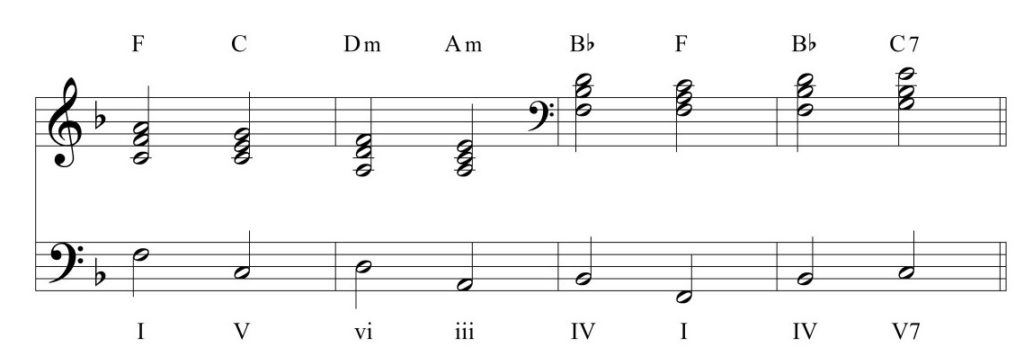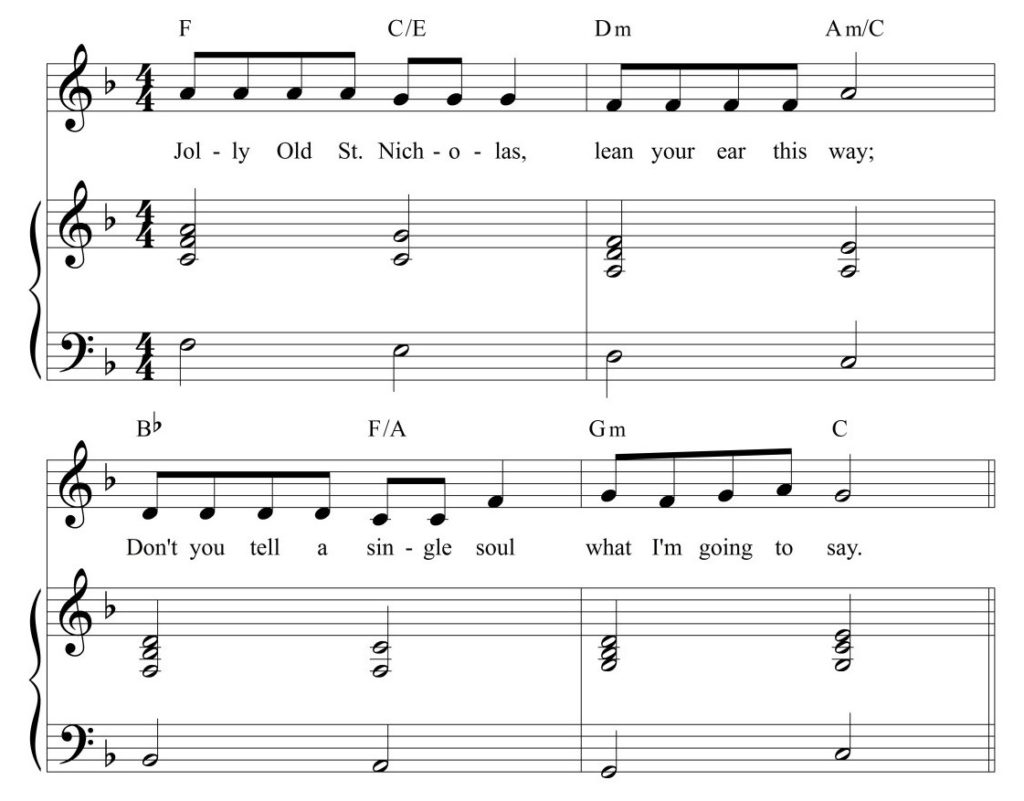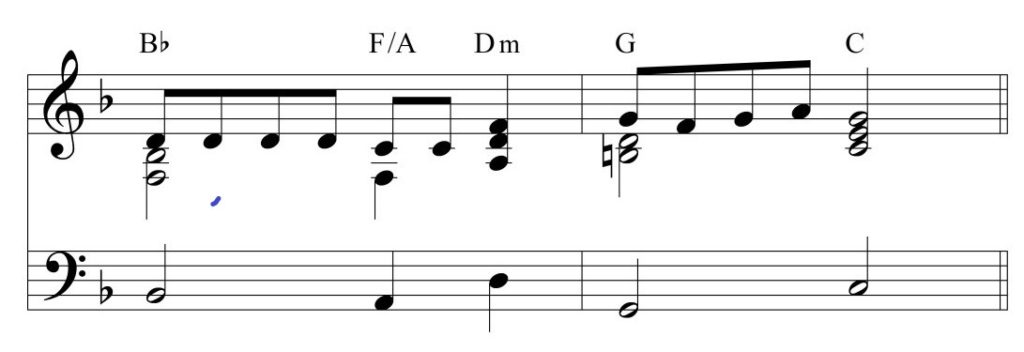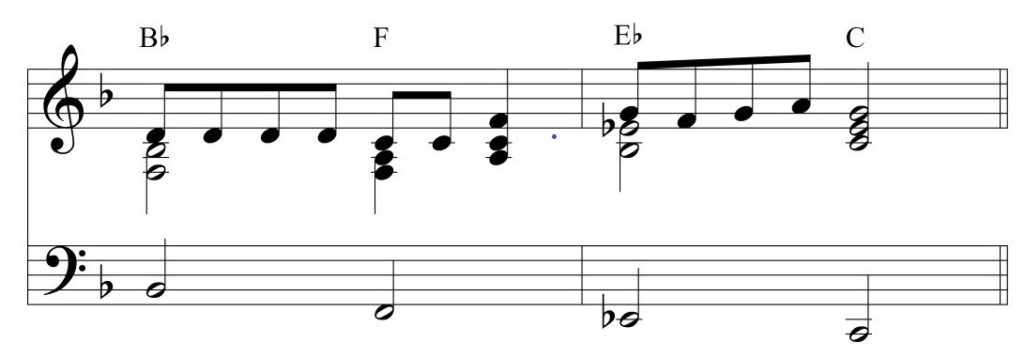Do you think Johann Pachelbel knew how popular his “Canon in D” would become? When I discovered the same chord progression in a few familiar songs, my search began for more examples. As you play this chord progression, are there songs that come to your mind?
Example 1: Chord progression from Pachelbel’s Canon in D.

This chord progression is often played with a scale in the bass, as follows:
Example 2: Chord progression from Pachelbel’s Canon in D with descending bass line.

The “Canon in D” progression works in all keys. The design of the bass part is the same regardless of the key: Down a 4th, up a 2nd, down a 4th, up a 2nd etc. and the right hand usually begins with the 3rd pitch of the scale (see example below).
Example 3: Chord progression from Pachelbel’s Canon in D transposed to F major

Life-long learners often create their own challenges, no longer needing extrinsic motivation such as an upcoming exam. You might enjoy the challenge of playing the above progression in additional keys, even including some that aren’t your favorite. To make this more enjoyable, sing a familiar melody like “Jolly Old St. Nicholas” as you play the chords (see following example).
Example 4: Jolly Old St. Nicholas

Now, try it with a scale in the bass:
Example 5: Jolly Old St. Nicholas with descending bass line.

Perhaps you noticed the use of Gm, the minor substitute for Bb, the IV chord. If a G minor chord works, you might want to try G major as the next-to-the-last chord. One way to nurture creativity is to ask the question “What if….?” For example, “What if I would add a few suspensions?” “What if I added a few embellishments to the melody?” After you’ve explored possibilities on your own, you might want to check out the ones that follow.
Example 6: Jolly Old St. Nicholas with chord changes

In the above example the next-to-the-last chord is G major instead of Gm as suggested. The use of a Dm chord sets up a strong progression of succession by 5ths. The example that follows includes a chord that is not a part of the key of F major. It’s a major chord built on the flatted 7th tone of the scale, another form of the subtonic chord. In the final example the melody is embellished and the progression is enriched by the use of suspensions and a tri-tone substitute chord: Db9(#11).
Example 7: Jolly Old St. Nicholas with non-diatonic chord changes.

In the final example the melody is embellished and the progression is enriched by the use or suspensions and a tri-tone substitute chord: Db9(#11).
Example 8: Jolly Old St. Nicholas with suspensions and tri-tone substitute chord

There are many songs that include the Canon in D progression. You’ll find it in songs like “Eat This Bread” by Jacques Berthier, “Give Thanks” by Henry Smith, “Let It Be” by McCartney and Lennon, “The End of the World” by Skeeter Davis, ”You Are My All in All” by Dennis Jernigan, and other songs, which you’ll discover as you play and listen with “informed ears.” “Tri-Tone Substitute Chords” is the topic of Session Eleven. For more information visit my web site: www.WantToPlayByEar.com

That article was published in Clavier Companion July/August 2017, Vol. 9, No. 4. It was entitled “Expanding Your Vocabulary of Chords.”
Comments are closed.